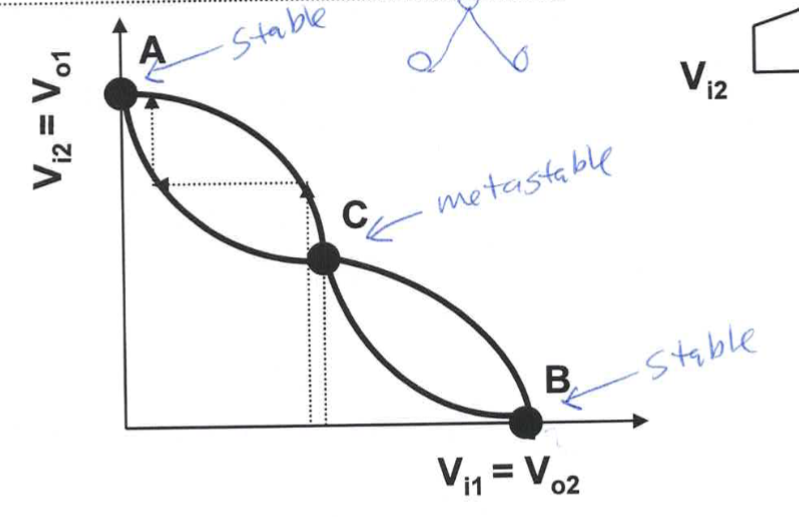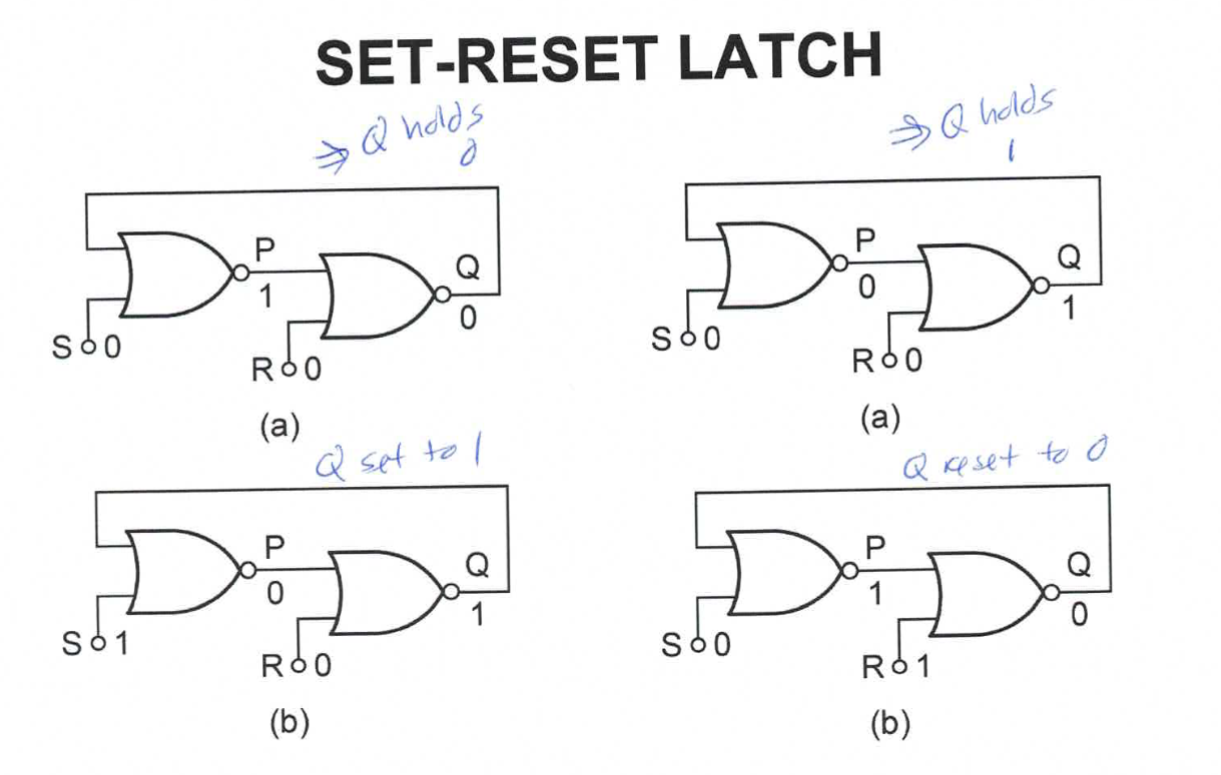sequential circuits
1/33
There's no tags or description
Looks like no tags are added yet.
Name | Mastery | Learn | Test | Matching | Spaced |
|---|
No study sessions yet.
34 Terms
what does the output of sequential circuits depend on?
outputs depend on past sequences of inputs too (not just present inputs like combinational)

why are A and C stable?
“ball on the mountain”
Little disturbance at A and C = will go back
but if you push the ball when it is at metastable: it will roll
set reset latches
a way to change states using nor gates

what is the race problem in SR Latches
when SR = 11 changes to SR = 00
resulting gate depends on which gate is faster
another problem with SR latches
glitches: output could change during transition stage and reset to 0
solution: clocked sr latch
gated d latch
sr latch + clock

probelm with d lathces
level sensitive latch: output Q is sensitive to D while the clock is 1 (high)
harder synchronization for d latches because it can travel thru multiple latches
differences of latches vs flipflops
Latches: Level sensitive
Flip Flops: edge triggered, built using latches
D flip flops
stored on clock edge
master slave
when clock is 0
master enabled, loads D, appears at P
Slave is disabled
when clock is 1
master disabled, P stays the same , slave latch enabled, loads P, appears at Q
what happens to the D value when the clock changes from 0 to 1
gets stored into slave
what does D flip flops solve
the problem of not knowing how many latches signal travels when C = 1
how? all four flip flops are loaded simultaneously during rising edge, won’t pay attention to their inputs until the next edge
what are some problems with gating the clock
if the enable change at the wrong time, this may create an extra clock edge
this cause loss of synchronization
Basic register
multiple flip flops sharing clock signals

shift register
if a feed back is added, cyclic shift register forms
johnson counter
shift register where there’s a feedback
cycle length = 2 * (number of flipflops)
moore machine
outputs associated with state
mealy
output associated with input and states
complete specified state graphs
OR of all outgoing edges = 1
AND of any pair of outgoing edges = 0
how bits does an N-bit register store? what is N
n bits (the width)
how many times is the basic register loaded
every cycle
how to design a register
determine the mux size
create the mux table
connect mux inputs
map control line
blocking
uses =
complete the assignment before moving onto the next instruction
combinational
nonblocking
<=
runs the instructions simultaneously
sequential (flipflops, registers)
parameters
used to specify constant values for a module
allows parameter values to be specified when module instantiated
paramter constant_name = constant value;
localparam
similar to paramterm but cannot be changed when module instantiated
used to define constants that should not be changed
localparam constant_name = constant value